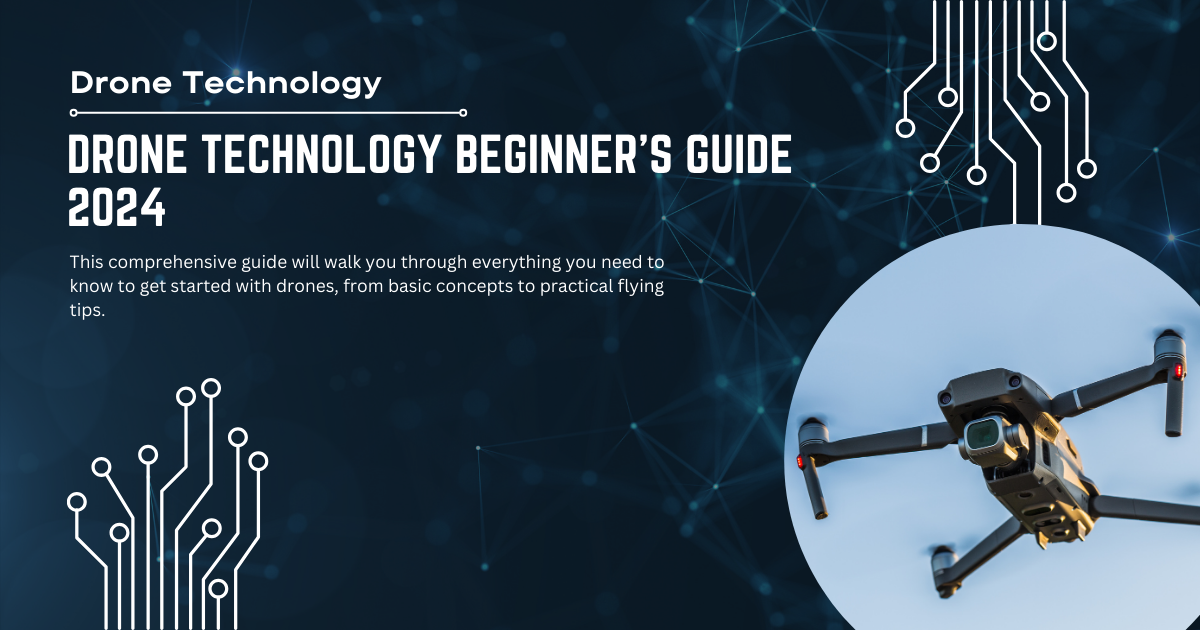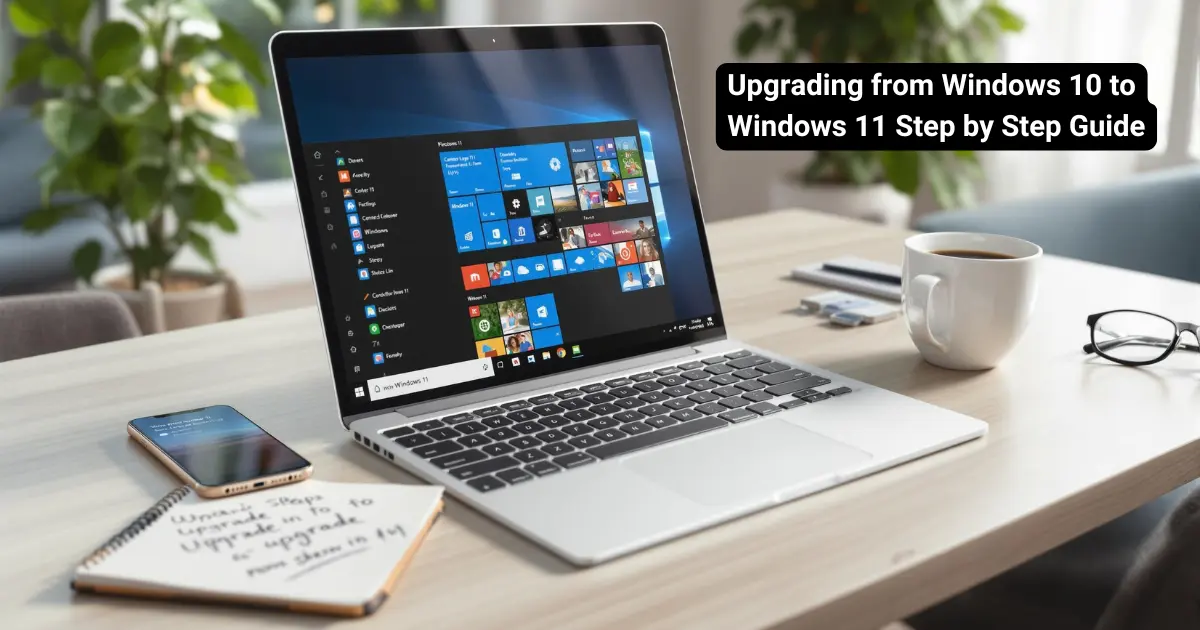Table of Contents
Introduction
Welcome to the exciting world of drone technology! Whether you’re dreaming of capturing breathtaking aerial photos, exploring new perspectives, or simply joining the rapidly growing community of drone enthusiasts, you’ve come to the right place. This comprehensive guide will walk you through everything you need to know to get started with drones, from basic concepts to practical flying tips.
What is Drone Technology?
Drones, also known as Unmanned Aerial Vehicles (UAVs), are flying devices that can be operated remotely or autonomously. These versatile machines have revolutionized various industries, including:
- Aerial photography and videography
- Package delivery services
- Agricultural monitoring
- Search and rescue operations
- Construction site surveying
- Real estate marketing
Understanding Drone Components and Mechanics
Core Components
- Frame: The skeleton of your drone, providing structure and protection
- Motors: Usually 4, 6, or 8 motors that power the propellers
- Propellers: Generate the lift and thrust needed for flight
- Battery: Typically lithium-polymer (LiPo) batteries providing power
- Camera: For capturing photos and videos (if equipped)
Basic Aerodynamics
Drones achieve flight through the coordinated action of their propellers. Each propeller spins in a specific direction, creating:
- Thrust for lifting off the ground
- Directional control through varying motor speeds
- Stability through balanced forces
Drone Electronics and Control Systems
Essential Electronics
- Flight Controller: The drone’s brain, processing input and controlling movement
- ESC (Electronic Speed Controller): Manages motor speed and power
- Sensors: Including gyroscopes, accelerometers, and GPS modules
- Radio Receiver: Communicates with your remote control
Remote Control Basics
Modern drone controllers typically feature:
- Two main control sticks for movement
- Multiple channels for different functions
- Telemetry data display
- Custom programmable buttons
Drone Software and Programming
Operating Systems
Popular drone operating systems include:
- DJI Fly
- ArduPilot
- Betaflight
- PX4
Programming Languages
For those interested in custom programming:
- Python: Ideal for beginners and automation
- C++: Used for advanced flight control
- Java: Common in app development
Drone Regulations and Safety Guidelines
Essential Regulations
- Register your drone with local aviation authorities
- Follow weight and size restrictions
- Maintain visual line of sight
- Respect altitude limits
- Avoid restricted areas
Safety Best Practices
- Always perform pre-flight checks
- Check weather conditions before flying
- Keep away from people and buildings
- Maintain sufficient battery levels
- Never fly under the influence
Flying Techniques for Beginners
Basic Maneuvers
- Takeoff:
- Find an open area
- Place drone on level ground
- Start motors and gradually increase throttle
- Hovering:
- Practice maintaining stable position
- Make small control adjustments
- Focus on visual references
- Landing:
- Slowly decrease altitude
- Maintain horizontal position
- Cut power once touched down
Common Mistakes to Avoid
- Flying too high too quickly
- Losing orientation
- Ignoring wind conditions
- Overconfident maneuvering
Drone Maintenance and Troubleshooting
Regular Maintenance
- Clean propellers and motors after each flight
- Check for loose connections
- Inspect battery condition
- Update firmware regularly
- Store in a cool, dry place
Common Issues and Solutions
- Unstable Flight
- Check propeller balance
- Calibrate sensors
- Verify motor performance
- Connection Problems
- Reset controller pairing
- Check antenna orientation
- Update firmware
Introduction to Aerial Photography
Camera Settings
- Use appropriate shutter speeds
- Set suitable ISO levels
- Consider ND filters for bright conditions
Composition Tips
- Follow the rule of thirds
- Look for leading lines
- Consider lighting conditions
- Plan your shots
Autonomous Flight Capabilities
The world of drone technology extends far beyond manual control. As drones become smarter, autonomous flight capabilities and artificial intelligence are revolutionizing how these machines operate. While these features might seem complex for beginners, understanding their basics is crucial for anyone serious about drone technology. In this section, we’ll explore how modern drones use AI and autonomous systems to enhance safety, capability, and user experience.
Think of autonomous flight as your drone’s autopilot system, while AI serves as its brain, making smart decisions in real-time. From following moving subjects to navigating complex environments, these technologies are making drones more capable and easier to use than ever before. Let’s dive into these exciting features that represent the future of drone technology.
GPS Navigation Systems
- Waypoint Navigation:
- Set multiple GPS coordinates for automated flight paths
- Adjust altitude, speed, and hover duration at each point
- Create complex flight patterns for mapping or surveillance
- Save and reuse successful flight paths
Return-to-Home (RTH) Features
- Smart RTH: Automatically returns when battery is low
- Failsafe RTH: Activates if signal is lost
- Dynamic Return Path:
- Calculates optimal return route
- Considers obstacles and battery life
- Adjusts altitude for safe return
Obstacle Avoidance Systems
- Sensor Types:
- Visual sensors (cameras)
- Infrared sensors
- Ultrasonic sensors
- ToF (Time of Flight) sensors
- Detection Ranges:
- Forward: typically 0.5-20 meters
- Backward: 0.5-16 meters
- Downward: 0.5-8 meters
Artificial Intelligence Integration
Computer Vision Capabilities
- Object Recognition:
- Real-time identification of objects
- Multiple object tracking
- Classification of objects (vehicles, people, animals)
- Size and distance estimation
- Scene Analysis:
- Terrain mapping and analysis
- Environmental condition assessment
- Landing zone identification
- Dynamic obstacle detection
Intelligent Flight Modes
- Active Track Technology:
- Subject following with multiple modes
- Parallel tracking for side shots
- Spotlight mode keeping subject centered
- Profile mode for side-view tracking
- Dynamic Flight Planning:
- Real-time path adjustment
- Weather condition compensation
- Battery optimization
- Mission abort and replanning
AI-Enhanced Photography
- Smart Capture Modes:
- Gesture recognition for hands-free control
- Automated panorama creation
- HDR photo compilation
- Best moment capture
- Intelligent Exposure:
- Scene recognition and optimization
- Automatic exposure bracketing
- Low-light enhancement
- Dynamic range optimization
Machine Learning Applications
- Flight Performance:
- Learning from pilot inputs
- Optimizing flight patterns
- Improving energy efficiency
- Enhancing stability control
- Predictive Maintenance:
- Component wear prediction
- Performance degradation analysis
- Maintenance scheduling
- Flight risk assessment
Advanced Safety Features
- Geofencing:
- Custom no-fly zones
- Maximum altitude limits
- Distance restrictions
- Dynamic restricted areas
- Environmental Awareness:
- Weather condition monitoring
- Wind speed and direction analysis
- Temperature monitoring
- Atmospheric pressure assessment
Future Developments
- Swarm Intelligence:
- Multi-drone coordination
- Collaborative task execution
- Distributed decision making
- Formation flying
- Advanced AI Integration:
- Natural language processing for voice control
- Emotional recognition for interactive features
- Advanced decision-making capabilities
- Self-learning flight controllers
Practical Applications
- Industrial Uses:
- Automated inspection routines
- Infrastructure monitoring
- Agricultural crop analysis
- Construction site mapping
- Emergency Services:
- Search and rescue operations
- Disaster area assessment
- Emergency response planning
- Medical supply delivery
Getting Started with Advanced Features
- Learning Path:
- Start with basic autonomous modes
- Practice with simple waypoint missions
- Gradually incorporate AI features
- Document and analyze flight data
- Safety Considerations:
- Always maintain visual line of sight
- Keep manual control skills sharp
- Understand system limitations
- Regular software updates
Resources for Advanced Learning
- Online courses in AI and robotics
- Drone programming communities
- AI development platforms
- Professional certification programs
Getting Started: Projects and Resources
Beginner Projects
- Basic hovering practice
- Figure-eight patterns
- Photo scavenger hunt
- Simple aerial mapping
Learning Resources
- Online drone communities
- YouTube tutorials
- Local drone clubs
- Online courses
- Drone forums
Conclusion
Starting your journey into drone technology can seem overwhelming, but by mastering these fundamentals, you’ll be well on your way to becoming a confident drone pilot. Remember to:
- Start small and practice regularly
- Always prioritize safety
- Join local drone communities
- Keep learning and exploring new capabilities
The drone community welcomes enthusiasts of all skill levels, and there’s always something new to learn. Share your experiences, ask questions, and most importantly, enjoy the journey of discovering the amazing world of drones!
Remember to check local regulations and obtain necessary permits before flying your drone. This guide serves as an introduction and should be supplemented with practical training and current regulatory information.



















What do you think?
Show comments / Leave a comment